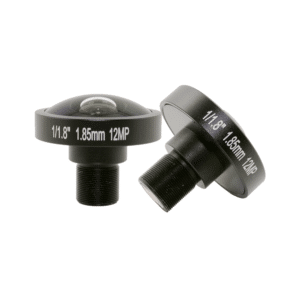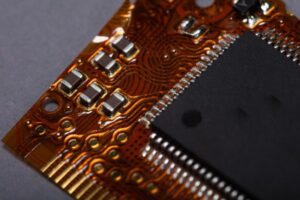What Are M12 Board Lenses?

M12 board lenses : Overlooked Wonder for Emerging Tech Needs
The M12 board lens is the most common size in a class of screw-mount, small, fixed focus lenses. The lenses are sometimes called “board mount” because they screw directly into the printed circuit board of the camera that houses the image sensor. These are sometimes called ” S Mount lenses ” with “S” standing short for small board-mount lenses.
The “12” is a result of the lens barrel having a 12mm diameter outer thread. Board mount lenses come in different sizes, with thread diameters from 4mm up to 16mm. They are all identified by the thread size, such as “M4” or “M6”.
All of these lenses can be used, but 12mm board mount lens are the most popular because of their large image circle, which makes them compatible with a wide range of image sensor sizes.
What Makes M12 Board Lenses so Useful?
M12 board lenses don’t initially seem very exciting. They’re usually fixed-focus, fixed-aperture lenses, with simple optical designs and no moving parts. There are M12 lenses with variable focus and variable iris, but these are less common. The lenses are screwed in until the image circle is centered on the sensor and then secured with UV-cured adhesive.
Their small size, low cost, and durable, simple construction makes them extremely useful for a variety of applications. These cameras are ideal for compact and low-power camera systems.
The M12 lens is available in a wide range of focal lengths, from ultra-wide fisheye to telephoto. Special optics are available for SWIR image sensors and Time-of-Flight image sensors. Telecentric M12 lenses are available for machine vision applications where things need to be aligned precisely without perspective errors. Telecentric lenses align all the chief rays to the optical axis, creating an orthographic projection that is essentially flat.
You’ll find the M12 board lens in many different devices, from webcams and automotive systems to mobile phones. These lenses are available in ruggedized versions for applications that require high impact, such as compact sports cameras.
The M12 is the little lens that could. These lenses are a great choice for compact cameras because they have a good balance between cost, size, and utility.
Board Mount Lenses in Consumer Devices
Board Mount Lenses is so common that you may have several in your home without even knowing it. These are widely used cameras systems in consumer products. They can be found everywhere, from your car’s backup camera to your monitor. Board mounted cameras can be found in GoPro sport cameras, doorbell cameras, and baby monitors.
You will find one or more board-mounted lenses in your motion tracker if you own a VR game controller. These lenses are used by the latest generation robot vacuum cleaners for their guidance system. These lenses may have smaller diameters, such as M6 or M8, but the majority will be larger M12 board lenses.
These lenses are easy to integrate into many consumer products because of their simplicity and size. In the last few years, manufacturers have quietly added more camera systems to products. In the past, backup cameras were an unusual feature in cars. Now they are commonplace.
M12 Board Lenses for Embedded Vision Systems
These systems, which are small in size, often use board-mount M12 lenses.
In addition to visible-light cameras, embedded systems use various depth-sensing techniques, such as stereo depth cameras and Time-of-Flight cameras. These systems can all be built using M12 board lenses. They are available in optics optimized for the wavelengths of visible light that these systems use. 
Hyperspectral lenses may be required for stereo depth cameras that need to “see”, both visible light as well as the light coming from an infrared pattern projector. LiDAR sensors, ToF cameras and other infrared laser-based cameras can also use specialized lenses.
Choosing the Right M12 Lens
There are literally thousands M12 lenses, many of which are specialized. If you are developing a camera for a particular application, selecting the right lens may be a challenge.
You need to first consider what type of camera is being built: Is it a visible-light camera or a depth-sensing infrared camera? The range of sensors and optics available will be determined by this.
You will also need to take into consideration the optical requirements of the image sensor that you use, such as the size of the circle you should use to cover the entire effective pixel area of the sensor.
The details that you are interested in will need to be taken into consideration. This is at the working distance, and also the field of view.
You should also consider the operating and environmental requirements of the camera system. This includes factors to which your vision system may be exposed, such as lighting conditions, ambient temperatures, and mechanical vibrations.
If you are going to need to choose a lens for a vision system, we’ve drafted a whitepaper called “How to Choose the Right Lens: Capturing What Matters”, which examines some of the factors that have to be considered when selecting a lens.
This paper of SUPERIOR® Optics focuses primarily on the optical parameters of lens selection and doesn’t delve too deeply into the non-optical factors that still have to be taken into account. However, it’s still a great starting point to understanding how to find the right M12 lens for your project.




